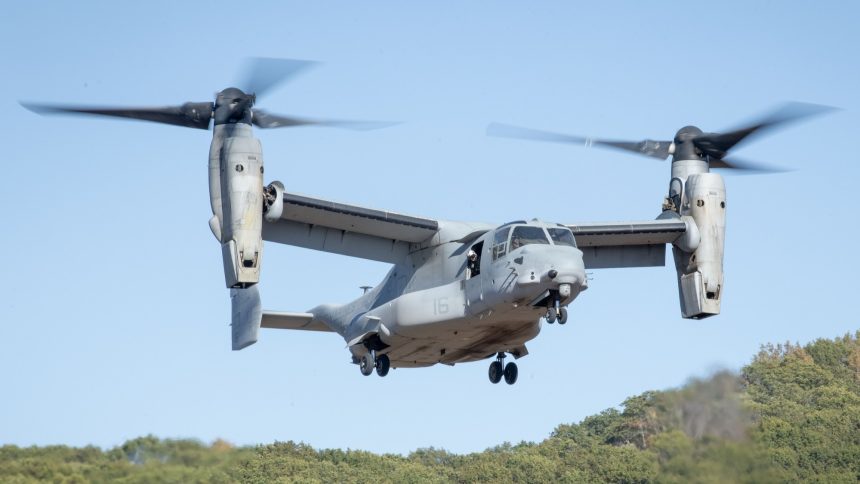The V-22 will receive a new proprotor gearbox in January 2026, after which the tiltrotor will start returning to its full flight profile.
The troubled V-22 Osprey can’t seem to be able to catch a break, as the tiltrotor will have to wait until 2026 before the flight restrictions are lifted and return to its full flight profile. Additionally, it appears that the MV-22B won’t get anymore the aerial refueling system that was being developed to allow it to refuel the F-35B.
The latest developments were revealed during the Modern Day Marine conference which was held in Washington from Apr. 29 to May 1, 2025.
New gearbox
The V-22 Osprey has been subject to multiple flight restrictions since the deadly crash of a CV-22 off the coast of Japan on Nov. 29, 2023, which resulted in eight Airmen killed and led to a three-month safety stand down of about 400 Osprey tiltrotors. the Aircraft Accident Investigation Board found that a proprotor gearbox which suffered a catastrophic failure was the cause of the mishap.
In June 2024, officials said the V-22 would not return to unrestricted flight operations before mid-2025. In a briefing held at the Modern Day Marine conference, USMC Col. Robert Hurst, head of the V-22 Joint Program Office, said the new proprotor gearbox would start delivery in January 2026 and, after it is installed, the V-22 will gradually return to the full mission profile.
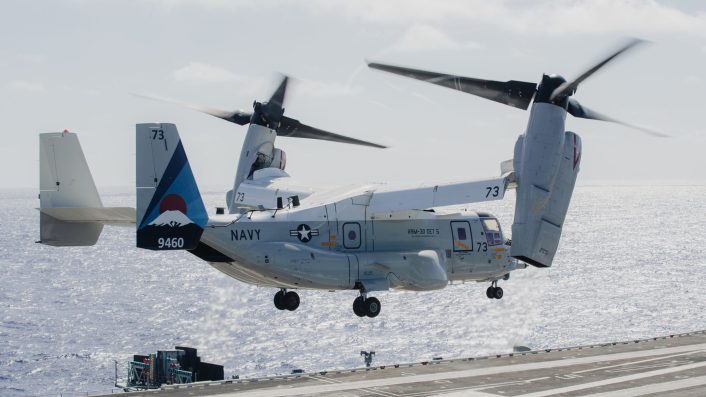
The CV-22 is a unique tilt-rotor aircraft, equipped with a proprotor gearbox in each engine nacelle which allows to transmit the power from the engine to the proprotor and reduce the speed of the shaft. The catastrophic failure which caused the 2023 crash was located in the Osprey’s left-hand PRGB. Here is an excerpt from the AIB report:
“Failure of the left-hand PRGB high-speed planetary section was most likely initiated by a crack in one of the high-speed pinion gear and fatigue cracking of the associated pinion gear’s bearing cage, which eventually fractured through the high-speed planetary carrier assembly. At least one piece of the failed high-speed planetary pinion wedged in the high-speed carrier assembly, grinding against the high-speed sun gear’s teeth until they were completely removed. The removal of the gear teeth prevented torque being applied to the left-hand mast.”
Another issue also caused incidents previously. In fact, V-22s often experience a problem called a “hard clutch engagement,” where the clutch slips, causing a fail-safe system to transfer power from one engine to the other. The clutch then re-engages, generating enormous spikes in torque.
The decision to field a newly designed clutch and an upgraded proprotor gearbox was accompanied by flight restrictions to ensure the safety of flight until the tiltrotors are fixed. In fact, the risk posed by the two issues would not be eliminated without a redesign of the two faulty components.
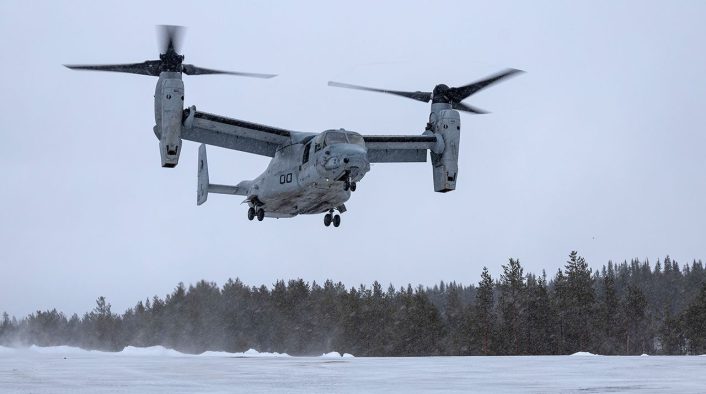
The delay in the return to unrestricted flight was caused by undisclosed studies to incorporate the triple-melting process for the steel into a greater number of gears in the new gearboxes. The V-22 program office is working together with Bell and Boeing to ensure the Osprey’s safety and reliability.
“We had some learning in the middle and that learning in the middle took us from the summer of ‘25 to start in the spring of ‘26,” Hurst said. “The generic form of that is we had certain gears we were targeting. And then we said ‘Hey you know what, why just a few? Let’s just do them all.’”
The triple melting is expected to drastically reduce the risk of the most likely cause of the gearbox’s failure, the non-metallic material inclusions. These are impurities in the metal that occur during the melting and pouring process and disrupt the homogeneity of the metallic structure, considerably altering the mechanical properties of the material.
According to Hurst, the new triple melting process is expected to reduce the inclusions in the material by roughly 90%.
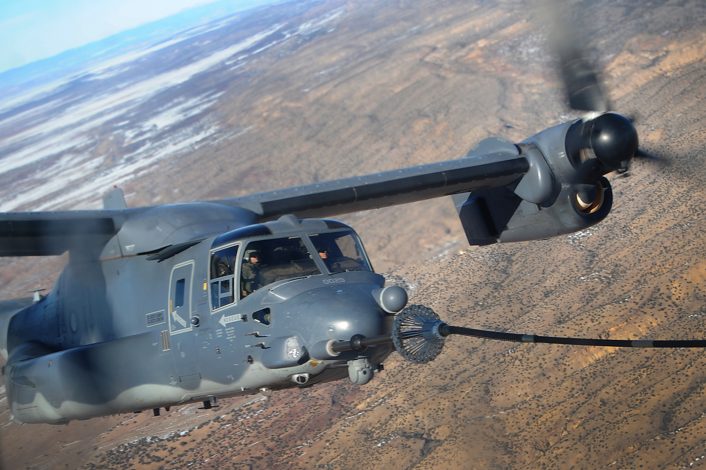
Additional efforts
As mentioned earlier, hard clutch engagements were the cause of multiple V-22 mishaps in the past.
Hard clutch engagement occurs when the clutch connecting the propeller’s gear box to its engine slips and the Osprey transfers the power load from that engine to the other one, allowing it to keep flying in the event of an engine failure, and then the power load in transferred back to the original engine as its clutch engages again. The large transfer of torque between the two engines within a span of milliseconds sends an impulse through the drive train, which can potentially damage the system and throws the aircraft off balance.
Apparently, the source of the problem resides in the Input Quill Assembly (IQA), the assembly that links the engine to the gearbox and which also houses the clutch. In fact, after extended data analysis, the V-22 JPO found a clear connection between the IQA’s flight time and the probability of a hard clutch engagement and therefore issued a time limit for the IQA.
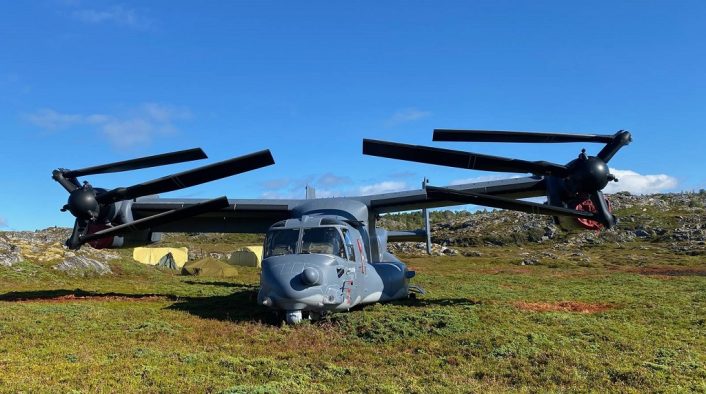
As a short-term solution, it was decided to replace the component after a predetermined flight hour threshold, while the IQA would be redesigned as a long-term solution. Since the introduction of the replacement threshold, Hurst said the Osprey fleet has not suffered a single hard clutch engagement.
The new IQA is currently being tested, but additional details are not available at this time. Additionally, sensors are being incorporated as part of an effort called the Osprey Drive System Safety and Health Instrumentation (ODSSHI), intended to monitor the health of V-22 components and provide data which would be used for predictive maintenance.
“We’re moving in parallel for both development and production on both of these,” Hurst said. “So we want to, as soon as it’s ready, implement it in the fleet.”
As the V-22 is expected to continue flying until the mid-2050s, three other improvement efforts are underway. These are a redesign of the flight control computer with a modern processor, the V-22 Enhanced Cockpit Technology Replacement (VeCToR) which will replace obsolete hardware inside the cockpit, and the larger Renewed V-22 Aircraft Modernization Plan (ReVAMP).
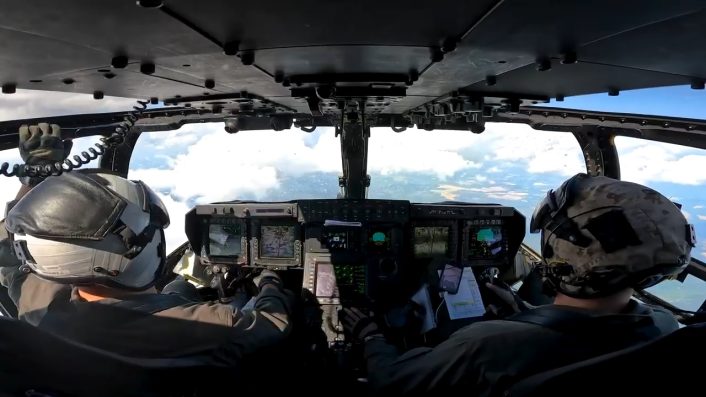
V-22 Aerial Refueling System
Replying to The War Zone’s questions at the Modern Day Marine conference, Hurst spoke about the modular aerial refueling kit that was tested to allow the USMC MV-22Bs to refuel F-35Bs assigned to the Air Combat Element (ACE) within Marine Expeditionary Units.
“It’s not a capability that the fleet is currently training to is the way I would offer that,” Hurst stated. “I don’t think that, since the fleet’s not currently training to it, I don’t know that anybody’s thinking about a timeline.”
A NAVAIR spokesperson additionally said: “The program office has no requirement at this time for that effort.”
The prototype of the V-22 Aerial Refueling System (VARS), which included tanks and a fuel hose installed in the cargo bay, was demonstrated in August 2013 over north Texas. The Osprey “safely deployed, held stable, and retracted the refueling drogue as an F/A-18C and an F/A-18D Hornet flew just behind and to the side of the aircraft,” said the statements at the time.
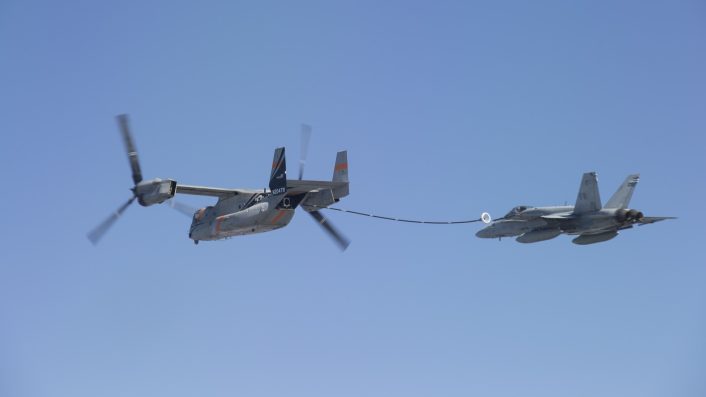
The new capability was supposed to be fielded by 2017 with the goal of making the ACE more independent and flexible, without having to constantly rely on other services’ tankers which might not always be available. VARS was designed as a roll-on, roll-off capability, so it would have been temporarily installed on a particular aircraft without restricting its use to a single mission permanently.
Such a capability would have been particularly useful today, as the USMC and the U.S. military in general are looking at way to tackle the problem of the long range required by aircraft which could be involved in a possible conflict over the Pacific Ocean.
With VARS, the Osprey would have increased its 1,721 gallons/11,700 lb fuel load with two 430 gallons auxiliary tanks which would have added 5,590 lb of fuel, bringing the total to 17,290 lb. The concept envisioned the MV-22 being able to transfer up to 10,000 lb of fuel to other aircraft even hundreds of miles from the ship.
Compared to the new MQ-25 Stingray unmanned tanker and the F/A-18 Super Hornet in tanker configuration, the MV-22 included another significant advantage: it can land virtually anywhere to take fuel, being able to take off and land like a helicopter on smaller ships or forward arming and refueling points (FARP).

